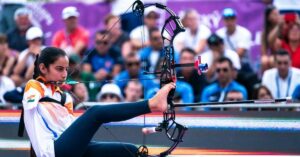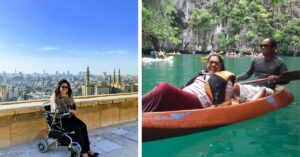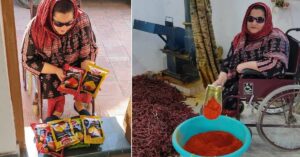My Disability Pushed Me to Build a Locomotive Device for Disabled People & Win Rs 10 Lakh
Aneesh Karma innovated a device called MASC-KAFO which helps people with weak lower limbs to improve their gait. The innovation benefits the elderly and people with multiple sclerosis, muscular dystrophy, and polio, among other ailments.

This article has been sponsored by Infosys Foundation.
“What stands out about the Aarohan Awards is that it does not see background or educational qualification, but simply whether the idea has impact,” says Aneesh Karma from Bulandshahr, Uttar Pradesh, on the Infosys Foundation’s social innovation awards, in which he won under their Healthcare Silver category in 2019.
Living with a disability himself, Aneesh had first-hand experienced the difficulties that came with being disabled. His innovation MASC-KAFO — mechanically actuated stance-controlled knee ankle foot orthosis — won acclaim at the awards due to its simplicity and ability to help people with locomotion. The target group included the elderly and people with multiple sclerosis, muscular dystrophy, and polio, among other ailments. This mechanically activated stance-controlled knee ankle foot orthosis has been designed to provide improved gait for people who have weakness in their lower limbs.
While Aneesh is now set on scaling this innovation to greater heights, he says the journey until now has been gratifying.
The Class 12 pass arts student recalls that before the Infosys Foundation’s Aarohan Social Innovation Awards, a major roadblock he would face while asking for funds or applying for awards is that people would question his educational qualifications.
“People wondered what an arts student without a medical background could innovate. But I believed it was in my blood to come up with ideas for the problems around me. I always said one thing — while I may not have the educational background, I do have the right intentions,” he notes.
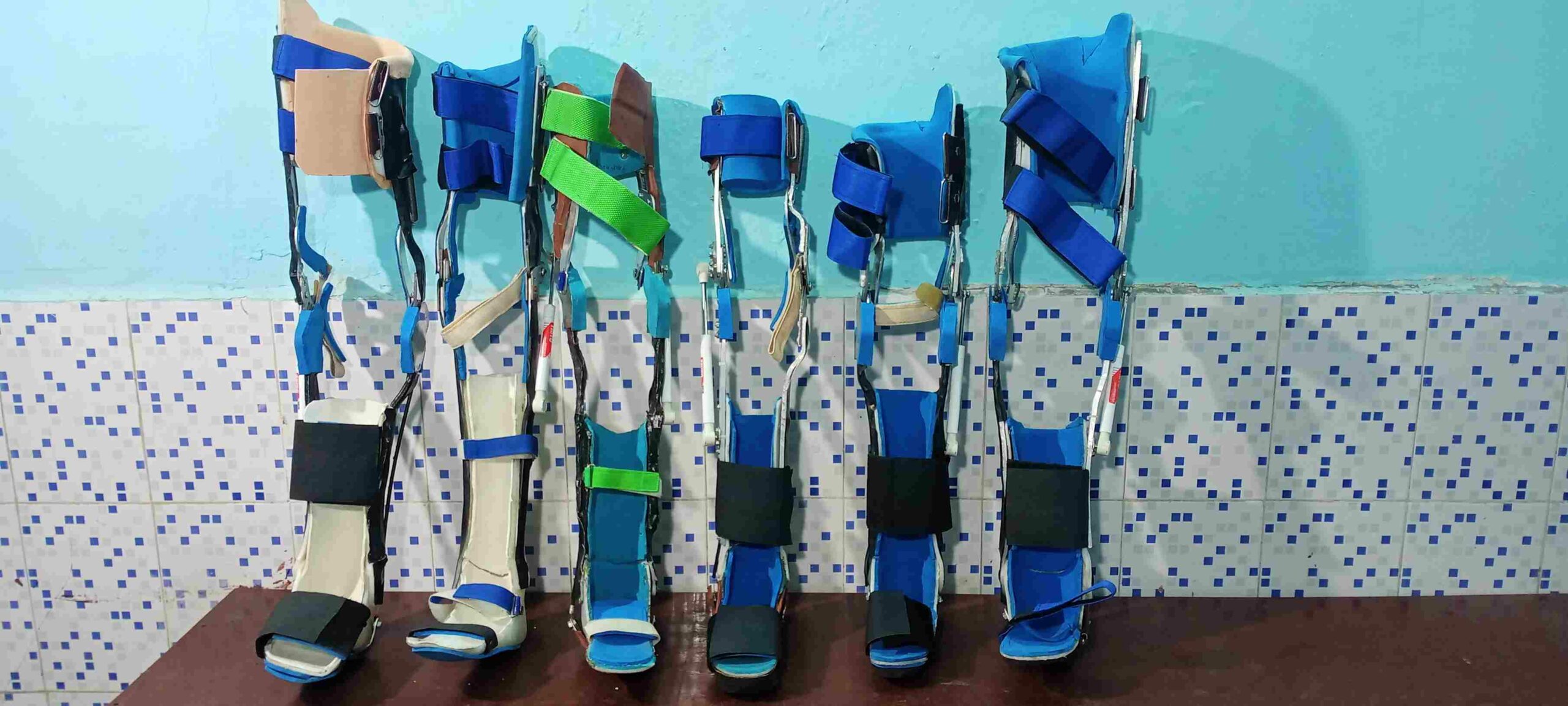
A unique substitute for callipers
An innate talent and the desire to do something out of the box resided in Aneesh. He says that the seeds for the innovation were sown through personal experience and the insights of other persons with disabilities.
“My wife and I are disabled and would make frequent trips to government offices trying to get our pension and handicap certificates. We would often meet other disabled persons there who would have come for the same thing. During one such visit, we spoke to them,” says Aneesh.
He says that a common complaint the people with disabilities had were with respect to the callipers. These, they told him, obstructed them from going to the toilet comfortably, riding cycles, sitting cross-legged on the floor and working, etc. Their clothes, too, would often get torn.
“I was now intent on finding a solution for my wife and for these people, and for disabled persons across India,” he says, adding that while one cannot deny that private companies have come up with substitutes for the usual callipers, these are often well over the budget of many.
“Out of the entire population, 95 percent aren’t able to access these callipers. My motive was if we, as disabled people, can’t find the solution outside, then we should make it for ourselves,” he adds.
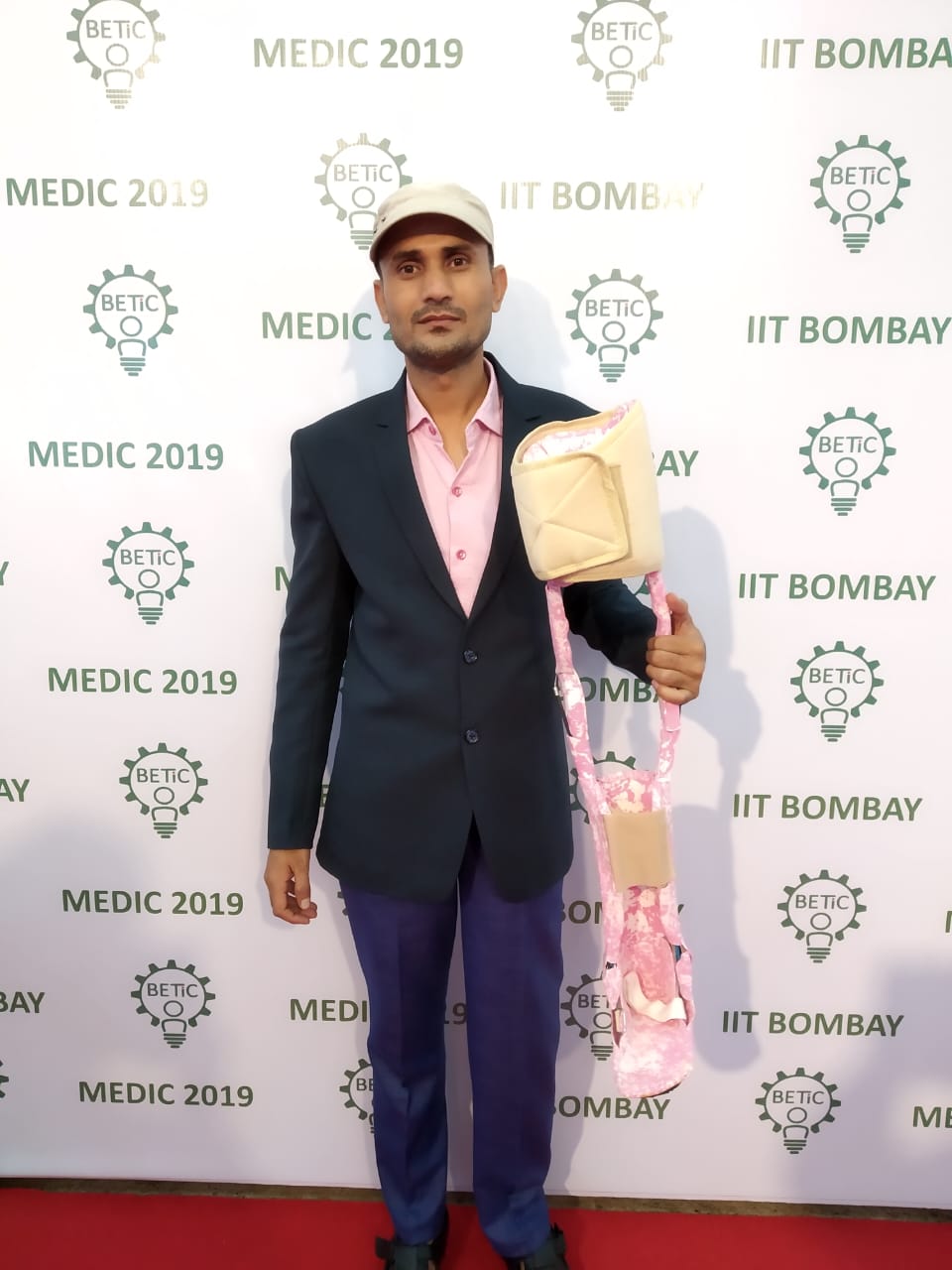
With these thoughts in mind, Aneesh quit his job and decided to devote his life and career to the cause of MASC-KAFO.
An initiative by disabled, for disabled
Building the device was memorable, he recalls. “I started from scratch — taking a cycle chain and making the design in a welding shop. And 70 tries later, I came up with a prototype, which was patented in 2015 by NRDC (National Research Development Corporation).”
Aneesh says the device is a handier version of the regular callipers. They are versatile and can be worn easily, even while going into the toilet. An attached belt makes it easier to wear and remove, and a lock automatically clicks into place when the user puts their foot down.
The angular shape makes it easy to use while walking, squatting, and even cycling, he adds.
Once the patent had been filed, Aneesh says he set his sights on modifying the device and scaling it up. But soon, he began struggling for funds. “People would often call me ‘mental’ for trying to run after a dream. Some even stopped speaking to me, but I never lost hope. My pockets were empty, and I had no job. I had a wife and kid to look after. I literally had nothing with me, but the desire and the fire to see my innovation to the finish,” says Aneesh.
He adds, “I also visited Delhi to show my prototype to a company that makes calipers, seeking their support for my innovation. But they said that they preferred foreign patents to Indian ones. After hearing this, my resolve to provide low-cost Indian calipers was even stronger.”
This is when in 2019, the Aarohan Social Innovation Awards by the Infosys Foundation came as a breather, and also a surprise.
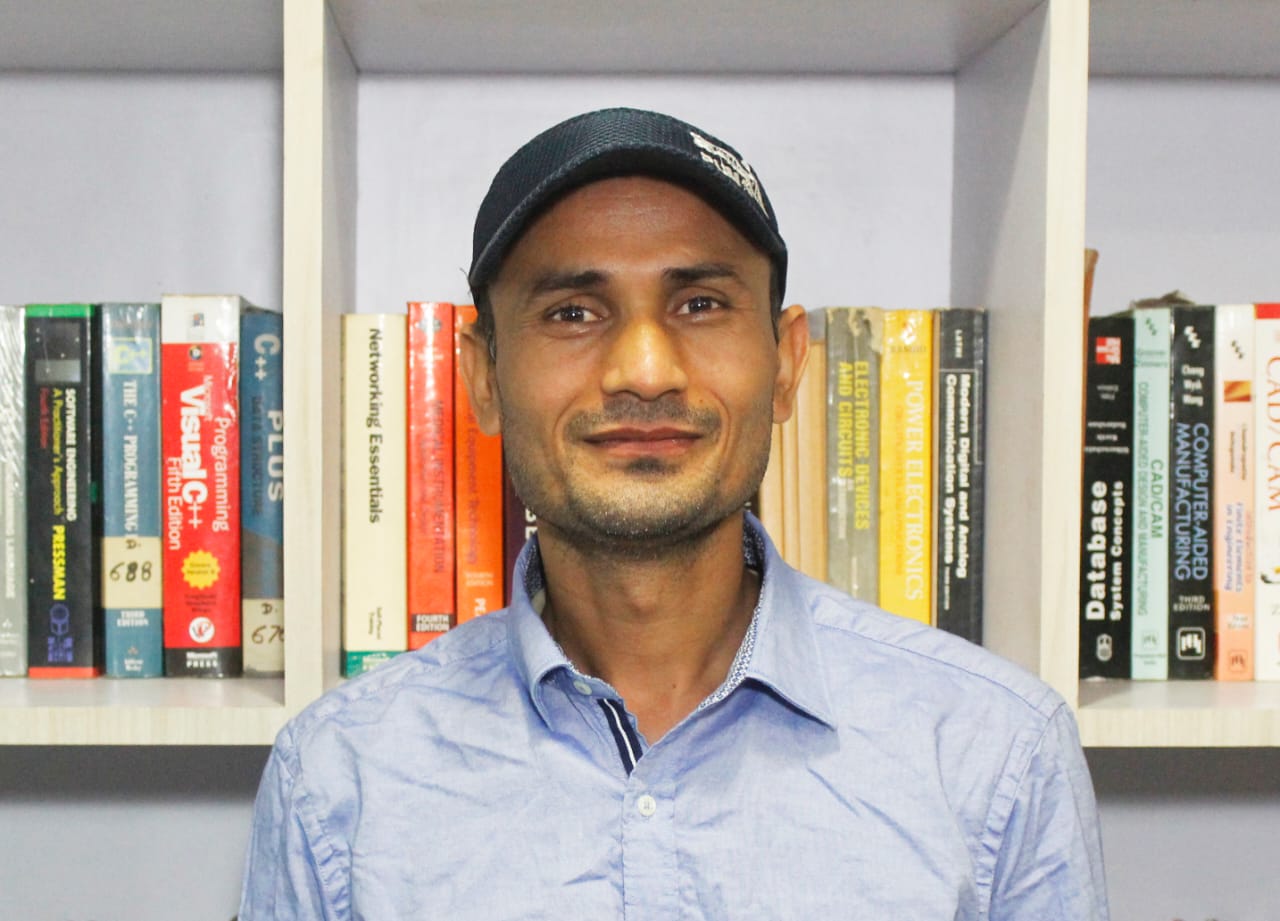
“Usually when I apply for awards or funding, I face difficulties as I do not have the required qualifications and no science background. But the jury at the Aarohan Awards only checked the social impact. Their thought process was amazing,” notes Aneesh, but adds that while he was overjoyed at getting funding of Rs 10 lakh, the pandemic-induced lockdown hit right after.
‘The Aarohan Awards helped us sustain.’
“I returned to my village in Bulandshahr in the COVID-19 lockdown. I was clueless about what to do,” he says.
Aneesh recounts how he would go around the Delhi-NCR asking people for help, and often be denied. But he notes, “I would ask again and again. I always believed that if 100 doors closed, one brilliant door would open. I had made up my mind that I would either die trying or come up with a solution.”
As the lockdown progressed, he informs that he faced a lot of problems due to increasing costs of raw materials and services such as laser cutting, CNC, and manufacturing. So he decided to make do with the resources he had. “Thanks to the funds I received from Aarohan, I was able to establish a workshop in my village. This is why I would like to sincerely thank the Infosys Foundation Team — Mrs Sudha Murthy Ji, Prof Anil Gupta and the jury team who supported me,” he adds.
Continuing, Aneesh says, “Here I developed the callipers and gave them to disabled people in and around the village to try and get their feedback. This time profited me well,”
Towards the end of the lockdown, Aneesh says he was able to return to Mumbai, where he came up with different versions of the device that would be suited to different people’s muscle powers.
“When it comes to callipers, one size does not fit all. Some patients have problems with their knees while others have problems with their thighs. These models were aimed at different problems,” he says.
Currently, the device is at the clinical study stage at MGM, from where Aneesh says the innovation will be put for retail.
“The awards were a path for us to do better, and I am hopeful of applying again so we can scale the product further and give it to more people. I’ve realised that in India, people research and then publish papers, and use the funds to do this. But then the idea dies out. I don’t want this to be the case with MASC-KAFO,” he shares.
Edited by Pranita Bhat
This story made me
- 97
- 121
- 89
- 167
Tell Us More
We bring stories straight from the heart of India, to inspire millions and create a wave of impact. Our positive movement is growing bigger everyday, and we would love for you to join it.
Please contribute whatever you can, every little penny helps our team in bringing you more stories that support dreams and spread hope.






